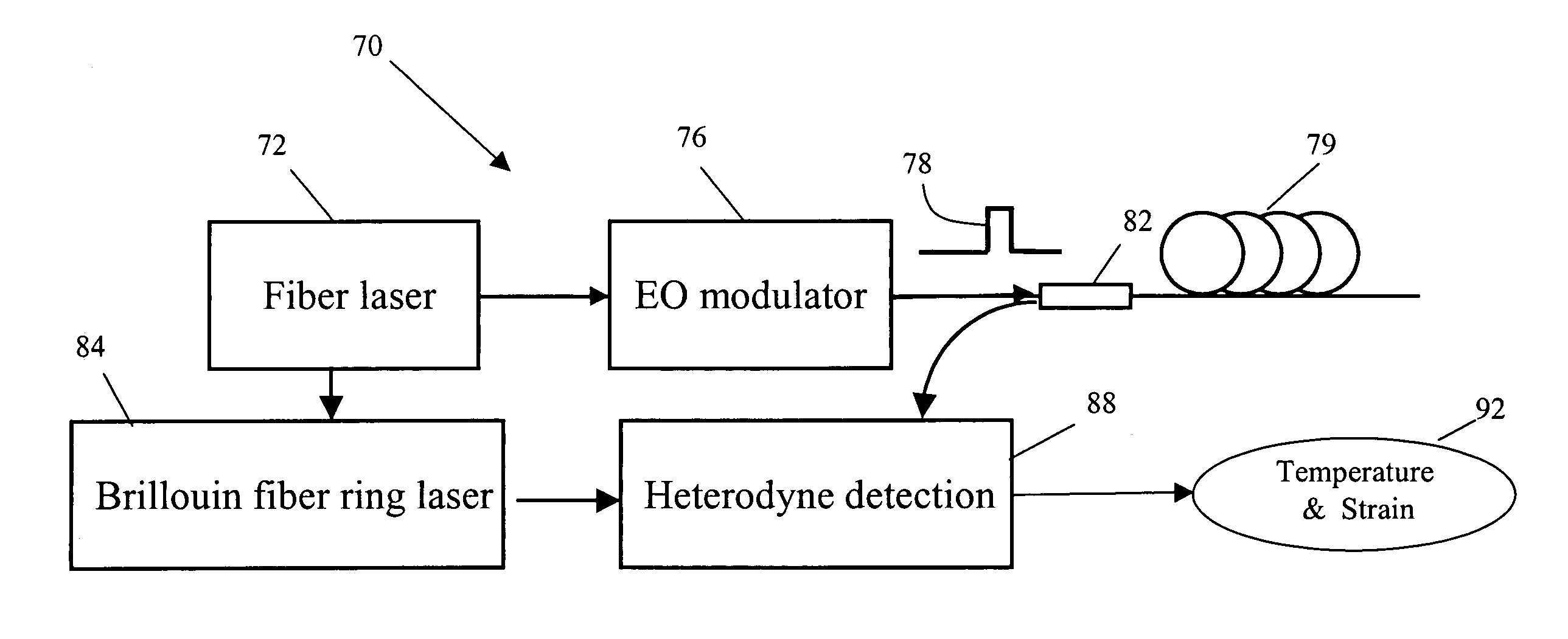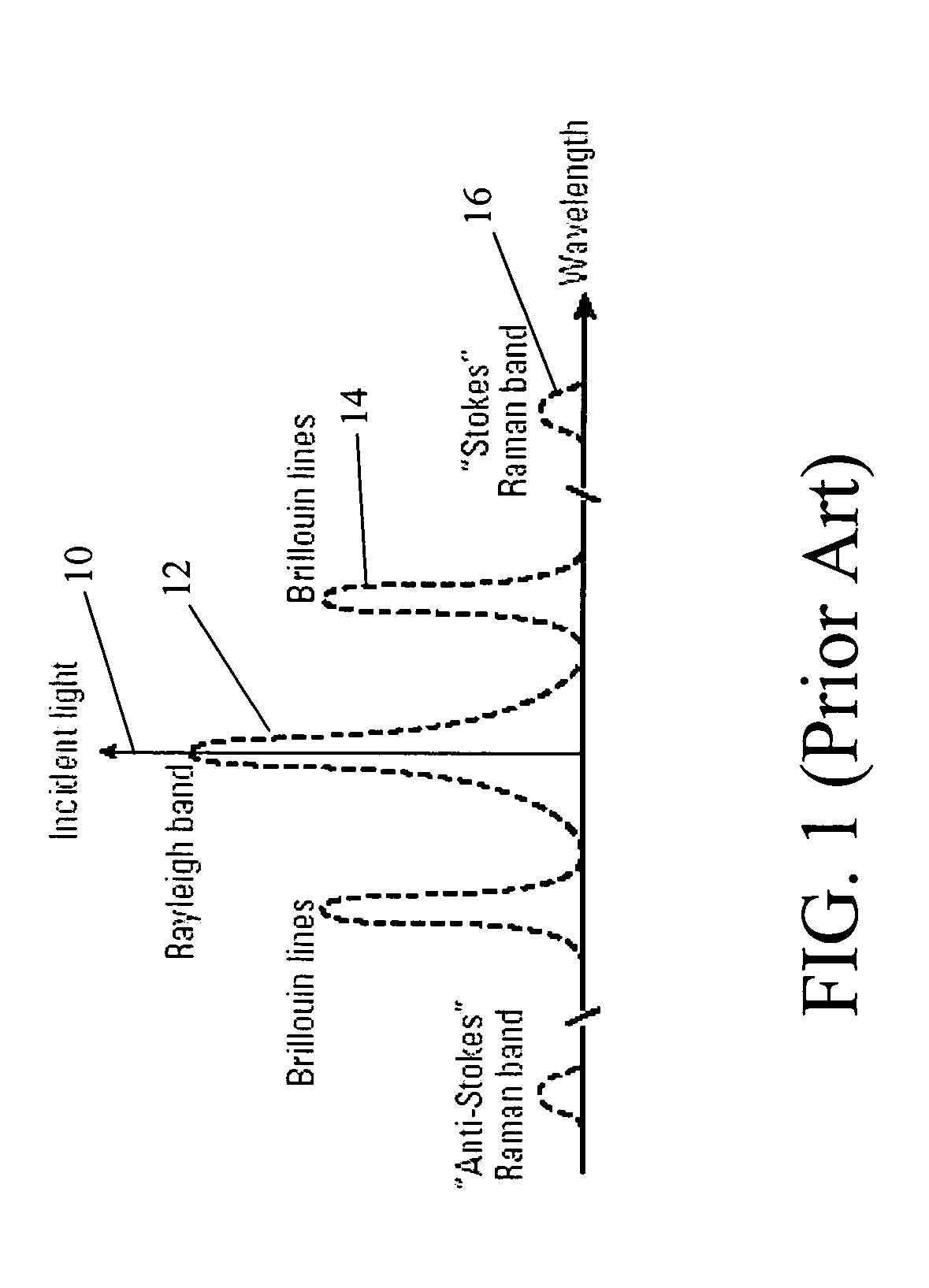Distributed fiber sensor based on spontaneous brilluoin scattering
- Summary
- Abstract
- Description
- Claims
- Application Information
AI Technical Summary
Benefits of technology
Problems solved by technology
Method used
Image
Examples
Embodiment Construction
[0030]The present invention provides a low cost spontaneous Brillouin scattering-based distributed fiber sensor that is capable of real-time measurement of both temperature and strain. The use of a Brillouin fiber ring laser to optically shift the frequency of the OLO to set the Brillouin / OLO beat frequency within the bandwidth of a conventional heterodyne receiver avoids the deficiencies of existing implementations.
[0031]As shown in FIGS. 4 and 5, a spontaneous Brillouin-based distributed fiber sensor 70 includes a fiber laser 72 that generates a single-frequency output 74 having a narrow linewidth suitably centered on a wavelength in the range of 1.3 to 1.5 microns. An electro-optic (EO) modulator 76 amplitude modulates the single-frequency output to launch pulsed light 78 into a sensing fiber 79 (up to many kilometers in length) generating spontaneous Brillouin scattering (SBS) 80 with a first Brillouin frequency shift (≈11 GHz). Light is coupled in and out of the sensing fiber v...
PUM
 Login to View More
Login to View More Abstract
Description
Claims
Application Information
 Login to View More
Login to View More - R&D
- Intellectual Property
- Life Sciences
- Materials
- Tech Scout
- Unparalleled Data Quality
- Higher Quality Content
- 60% Fewer Hallucinations
Browse by: Latest US Patents, China's latest patents, Technical Efficacy Thesaurus, Application Domain, Technology Topic, Popular Technical Reports.
© 2025 PatSnap. All rights reserved.Legal|Privacy policy|Modern Slavery Act Transparency Statement|Sitemap|About US| Contact US: help@patsnap.com



